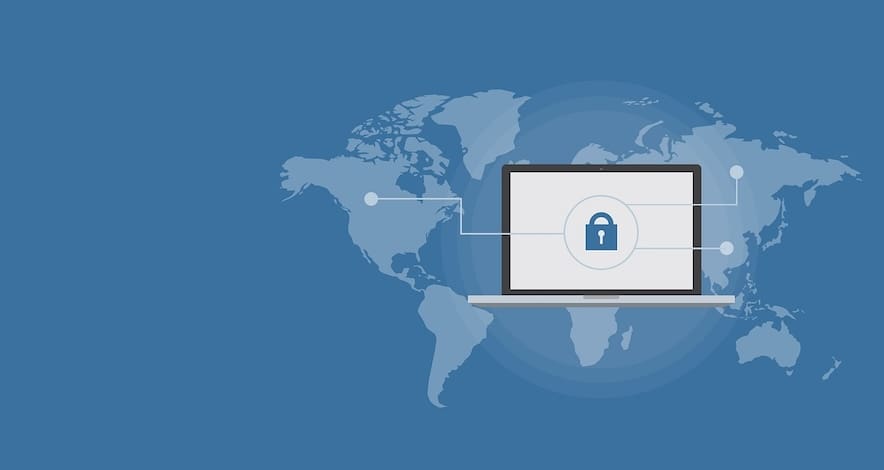That doesn’t sound like a problem, but sometimes, it can be. You see, the more data you can collect on your site visitors, the better user experience you can create for them. This is a big thing if you’re still learning how to move your business online. On the other hand, you must keep all the data you get protected and get it unobtrusively. It’s tricky to do it all at once, but that’s what we’re here to teach you today.
Before discussing that, let’s define cybersecurity and the threats it protects from.
What is cybersecurity?
Cybersecurity is the practice of keeping systems, networks, and programs safe from attacks. Ideally, it should have a few layers of protection spread across the system to make the most of it.
However, like anything else, it comes with its challenges. Technology evolves, and hackers find new ways to harm your data all the time. The problem here is that there are so many devices—there are more of them than there are people—so it’s easy for attackers to try new things and be innovative.
Types of cyberattacks
To sum it up, cyberattacks happen for a few reasons. Most commonly, hackers or hacker bots will try to gain use of your server to send out spam mail. However, they also might do it to manipulate or destroy sensitive information or make the standard function of your processes impossible. When they ”get in”, the attackers will try to extort money or damage the business they’re attacking in one way or another.
Now, there are three types of cyberattacks you might come across. Here’s what these are and how to recognize them.
- Confidentiality. In these attacks, hackers steal personal or financial information. They may sell it on the dark web for others to use later.
- Integrity. These are the leaks you hear about all the time. Most of the time, they are designed as sabotage, and that’s their purpose.
- Availability. If someone attacks you this way, you won’t be able to access your data. They’ll ask you to pay a ransom; when you do it, they’ll return the access.
We don’t have to stress that none of these bring pleasant experiences when they happen. If you want to avoid them at all costs, your best bet is to hire website maintenance experts to take care of the safety at all times. You won’t have to go through the process alone; your site will be as safe as possible.
How to integrate cybersecurity in web design — Protecting your users
Since 2018, the concept of ”privacy by default” has been used. Thanks to Europe’s General Data Protection Regulation (GDPE), it’s a legal requirement for all sites and a good thing. It helps keep the user’s data safe.
However, it brought an unusual challenge for web designers worldwide. They must find a way to collect data to provide the personalized experience users love so much, but at the same time, they must keep it out of reach for anyone who shouldn’t access it.
If you’re trying to learn how to integrate cybersecurity in web design, here are a few helpful tips.
Minimize data collection
According to privacy, by default, you can only collect the data that’s relevant and necessary for your services. If you go down this road, you won’t have to store or analyze any additional data. So, there’s nothing that attackers can steal from you.
For example, don’t ask for your user’s full address or phone number if you don’t need it. Those two pieces of information are often required, but they don’t serve many purposes. Moreover, when you analyze your data, you can replace your customers’ names with random ID numbers.
Use clear data-sharing notices.
Most of the data websites collect is obtained automatically. Of course, we’re talking about tracking scripts and cookies here. In the last few years, more sites have added banners that inform visitors about how they use the data they collect. Visitors can accept it, reject it, or do nothing about it.
We know that this all sounds confusing. There are many things to consider, which only adds to the mess. Luckily, one of the benefits of hiring website maintenance professionals is that it takes these technical bits of your mind. So, if you don’t want to deal with it, you don’t have to.
Protecting your website
Manage your security
Remember that privacy-focused design on your website doesn’t mean there are no other vulnerabilities in your system. If your employees work remotely or on a public network, they’re exposed to various attacks. So, you’ve got to be careful.
A good VPN software will go a long way here. It encrypts the connection, so even if someone gets your data package, they won’t be able to access anything.
Here are a few more tricks to keep your site and data secure.
- Create unique and strong usernames and passwords for accessing your website.
- Limit the number of login attempts.
- Don’t allow auto-fill.
- Regularly update your passwords.
- End expired sessions.
- Regularly scan all your devices for malware.
The bottom line
User privacy is more important now than ever, and this trend seems to continue. So, if you haven’t done it already, it’s time to upgrade your business website and make it in sync with all the new rules.
By following everything we discussed in integrating cybersecurity in web design, you’ll boost your company’s success and make your customers trust you even more. If you want professionals to protect your website, make sure to reach out to them and let them handle this process. Your site will be secure, and your visitors will be happy!


